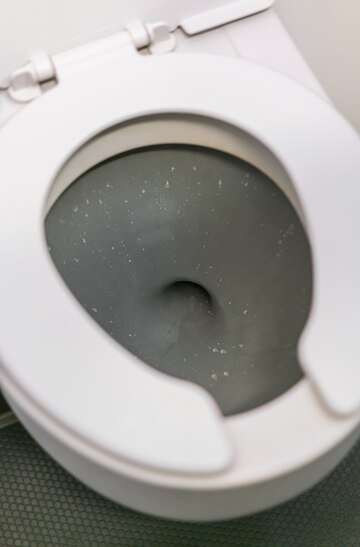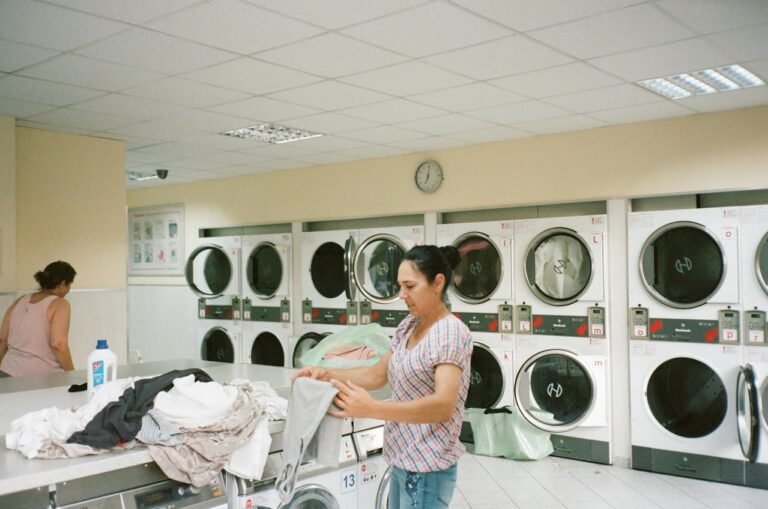Let’s face it — toilets aren’t exactly a glamorous topic, but they’re a big part of our daily lives. And as the world becomes more focused on sustainability, composting toilets are popping up as a real game-changer. Unlike your regular water-guzzling toilet, a composting toilet doesn’t need gallons of water to flush waste away. Instead, it turns what we flush into a useful resource: nutrient-rich compost. Pretty amazing, right?
But how do these toilets actually work? And why are so many people switching to them? You might wonder if they’re gross or complicated. The truth is that composting toilets are simple, clean, and surprisingly effective. Whether you’re living off-grid, want to reduce your water bills, or are just curious about a more eco-friendly lifestyle, this guide will break it all down for you.
We’ll dive into how composting toilets work, hear from real people who use them, and share expert insights to answer your burning questions. By the end, you’ll know if a composting toilet is right for you and feel confident about making the switch, or at least understand why they’re such an innovative solution for a more sustainable future. Let’s dig in!

In This Article
- What Is a Composting Toilet?
- The Science Behind Composting Toilets
- Types of Composting Toilets
- Addressing Common Concerns About Composting Toilets
- Environmental Benefits of Composting Toilets
- How to Choose the Right Composting Toilet
- Tips for First-Time Users
- Conclusion
What Is a Composting Toilet?
A composting toilet is a simple, eco-friendly alternative to traditional toilets. Instead of using gallons of water to flush waste away, it turns human waste into nutrient-rich compost using a natural process called aerobic decomposition. This makes it especially useful in areas where water is scarce or where traditional plumbing isn’t practical.
So, how does it work? At its core, a composting toilet creates the perfect environment for microorganisms and bacteria to break down waste into compost. By eliminating the need for water or heavy infrastructure, it helps conserve resources and reduces the environmental impact of managing human waste.
Key Components of a Composting Toilet
Let’s break down the main parts that make a composting toilet work:
- Composting Chamber: This is the heart of the system. It’s where waste is collected and begins the breakdown process. Think of it as the “compost bin” for human waste.
- Ventilation System: To keep things fresh, a ventilation system introduces airflow. This not only helps control odour but also supports the decomposition process by providing oxygen.
- Urine Diverter (Optional): Some models have a feature to separate liquid and solid waste. This improves efficiency and makes the composting process faster.
- Agitator or Mixer: Some toilets come with a mixer to stir the compost, ensuring even decomposition and preventing clumping.
- Collection Tray: Once the composting process is complete, the finished compost is collected here. It’s easy to remove and can be safely used in gardens (for non-edible plants).
In essence, composting toilets aren’t just toilets; they’re a small-scale solution to big environmental challenges. They save water, reduce waste, and give something back to the earth—all while keeping things surprisingly simple.
Learn More: How to Make Your Home More Sustainable: A Comprehensive Guide
The Science Behind Composting Toilets
A composting toilet works by mimicking nature’s own recycling system. Instead of flushing waste away with gallons of water, it uses the natural process of aerobic decomposition to break down human waste into safe, nutrient-rich compost. Let’s break it down in simple terms:
1. Waste Collection
When you use a composting toilet, the waste goes directly into a composting chamber. Here’s where the magic begins. To keep everything balanced, you usually add something carbon-rich like sawdust, coconut coir, or even shredded leaves. This “brown” material works to balance out the nitrogen in human waste (the “green” material) and creates the perfect environment for decomposition to start.
2. Decomposition
Once the waste is inside the chamber, microorganisms such as bacteria and fungi get to work. These tiny helpers break down the organic material into simpler compounds. During this process, the microbes generate heat, which not only speeds up the decomposition but also helps kill off harmful pathogens. Essentially, the toilet becomes its own mini-composting ecosystem.
3. Moisture Control
For the composting process to work effectively, the moisture level needs to be just right. Too much moisture can create a smelly, anaerobic environment (the kind where decomposition slows and odours take over). On the other hand, if it’s too dry, the microbes won’t have the water they need to do their job. Good composting toilets are designed to strike this balance, often with ventilation and liquid-diversion systems.
4. Aeration
Airflow is essential. Composting toilets use a ventilation system to introduce oxygen into the mix. This supports aerobic (oxygen-loving) decomposition, which is efficient and odour-free. Some models even include manual mixers or agitators to ensure everything is evenly aerated.
5. Curing
Once the initial breakdown is complete, the material is moved to a curing tray or separate compartment. Here, it matures into humus—a nutrient-rich, soil-like material. This curing phase is critical for ensuring any remaining pathogens are neutralised and the compost is safe to use.
Scientific Backing
A study found that properly managed composting toilets can reduce pathogens in human waste by an impressive 90% within just six months. This means the compost is not only effective but also safe for use in non-edible gardens, offering a sustainable way to return nutrients to the earth.
By using the principles of science and nature, composting toilets offer a simple, eco-friendly way to manage waste responsibly. It’s not just about saving water—it’s about creating a cleaner, greener future.
Types of Composting Toilets
When it comes to composting toilets, there isn’t a one-size-fits-all solution. Different types cater to different needs, whether you’re living in a tiny home, managing a larger household, or simply looking for the most efficient option. Let’s break them down in simple terms so you can find the best fit for your lifestyle.
1. Self-Contained Systems
Perfect for: Tiny homes, RVs, boats, or any small space where simplicity is key.
How it works: Think of this as an all-in-one unit. Everything you need—the composting chamber, ventilation system, and sometimes even a urine diverter—is built into a single, compact structure. You don’t need to hook it up to a separate tank or a plumbing system, which makes installation straightforward and maintenance manageable.
Why it’s great: Self-contained systems are easy to use and move, making them a favourite among off-grid enthusiasts and travellers. For example, RV owners love these because they eliminate the hassle of finding dump stations. Just add some carbon-rich material (like sawdust) after each use, and let the system do the work.
2. Central Systems
Perfect for: Larger households or buildings with more space and more people.
How it works: These systems separate the toilet itself from the composting chamber. The waste is transported to a large, remote chamber, usually located in a basement or an outdoor space. This setup allows the composting process to handle greater volumes of waste efficiently.
Why it’s great: Central systems are ideal for families or shared spaces where multiple people are using the toilet regularly. They’re also less intrusive because the bulk of the waste management happens out of sight and away from living areas. If you’re serious about long-term sustainability for your household, this system might be worth the investment.
3. Urine-Diverting Toilets
Perfect for: People who value efficiency and want to minimise odour.
How it works: These toilets separate liquid waste (urine) from solids. Why does this matter? Liquid waste contains a lot of nitrogen, which can throw off the composting process if mixed with solids. By keeping them separate, you’re speeding up decomposition, reducing odours, and making the final compost even better.
Why it’s great: If you’re meticulous about efficiency or live in a hot climate where odours can quickly become an issue, this design is a lifesaver. Plus, some users repurpose the separated urine as a natural fertiliser for ornamental plants (after dilution, of course).
Learn More: 20 Examples of Biodegradable and Non-Biodegradable Waste
Addressing Common Concerns About Composting Toilets
1. Does It Smell?
This is probably the number one worry people have. The good news? A properly maintained composting toilet shouldn’t smell bad at all. These systems are designed to keep odours under control by using smart features like:
- Ventilation systems: These actively pull air out of the toilet, carrying odours away before they can linger.
- Carbon-rich materials: Adding things like sawdust or coconut coir after each use helps absorb moisture and neutralise smells.
- Moisture balance: Too much or too little moisture can cause problems, so keeping the conditions just right is key.
Think of it this way: a well-maintained composting toilet smells less than an overflowing trash bin.
2. Is It Sanitary?
Yes, composting toilets are designed with hygiene in mind. They use natural processes, like heat and microbial activity, to break down waste and kill harmful pathogens. To keep things safe:
- Let the compost cure: This extra time ensures all pathogens are eliminated.
- Use finished compost wisely: Stick to using it on ornamental plants, not your vegetable garden.
When you follow these basic guidelines, composting toilets are not only sanitary but also a safe way to manage waste sustainably.
3. How Often Do You Empty It?
This depends on how many people are using the toilet and the size of the composting chamber. For example, a family of four using a self-contained system might need to empty it every three to four weeks. Larger systems or less frequent use mean longer intervals. Emptying isn’t as unpleasant as it sounds—by the time the compost is ready, it’s dry and odourless.
Environmental Benefits of Composting Toilets
Water Savings
Did you know that traditional toilets use between 1.6 and 7 gallons of water every time you flush? Over a year, this adds up to thousands of gallons per household. By contrast, composting toilets don’t use water at all, which means you can save a significant amount. Imagine the impact of eliminating water usage for flushing entirely! Here’s a quick comparison:
| Toilet Type | Water Usage (Gallons/Year) |
|---|---|
| Traditional | 8,000 – 24,500 |
| Composting | 0 |
For families in drought-prone areas or those simply looking to cut back on water consumption, this is a game-changer.
Carbon Footprint Reduction
It’s not just about water. Traditional wastewater treatment plants are energy-intensive. According to the EPA, these facilities account for around 3% of global energy use. By using a composting toilet, you bypass the need for these systems entirely. This means you’re directly reducing the energy demand and the associated greenhouse gas emissions.
In simpler terms: composting toilets don’t just save water; they help save energy, too. It’s a win-win for the planet.
Expert Quotes: Why Composting Toilets Matter
Let’s hear from two authorities on the topic who explain why these systems are more than just a trendy alternative.
Dr. Maria Sanchez, an environmental scientist with years of research in sustainable waste management, shares her perspective: “Composting toilets are a crucial tool for sustainable living. They address water scarcity and reduce the burden on wastewater treatment facilities.” Dr. Sanchez highlights a key point here: by cutting down water usage, these toilets make a big difference in regions where water resources are limited. Plus, they’re a practical way to lessen the strain on systems that process traditional wastewater—a win-win for the planet.
John Miller, the author of Sustainable Solutions, echoes these sentiments. “Using a composting toilet is one of the simplest ways to live more sustainably. It’s a small change with a significant impact,” he says. Miller’s point is powerful because it reminds us that big environmental changes often start with small, manageable steps. Switching to a composting toilet might seem like a small action, but it’s one that adds up, especially when adopted widely.
These expert insights underline the value of composting toilets in conserving resources and protecting our planet. Small changes, backed by science and real-world benefits, can lead to significant environmental progress.
How to Choose the Right Composting Toilet
- Assess Your Needs: Think about who will be using the toilet and how often. Is it just for a couple in a tiny home or for a large family? Also, consider where you plan to install it. Do you have limited space, like in an RV or boat, or more room in a home or cabin? Finally, don’t forget to check your local regulations—some areas have specific requirements for composting toilets.
- Check Features: Not all composting toilets are created equal, so it’s important to look for features that matter to you. Ease of maintenance is key—no one wants a system that’s a hassle to clean. Durability is another big factor, especially if you’re investing in a high-end model. Lastly, make sure the ventilation system is effective; this helps control odours and ensures the composting process runs smoothly.
- Set Your Budget: Composting toilets can cost anywhere from $500 to $5,000. Decide what you’re willing to spend and weigh that against the features you need. Sometimes, investing in a more expensive model can save you money and effort in the long run.
Tips for First-Time Users
- Start Simple: Choose a self-contained system to ease into composting.
- Maintain Balance: Add carbon-rich materials regularly.
- Monitor Conditions: Check moisture levels and aerate compost weekly.
- Educate Users: Ensure everyone knows how to use the toilet correctly.
Conclusion
Composting toilets are more than just a sustainable choice—they’re a step towards a more conscious and eco-friendly lifestyle. By conserving water, reducing waste, and producing valuable compost, they address several environmental challenges simultaneously.
If you’re ready to make the switch, start small, do your research, and embrace the learning curve. In time, you’ll not only reap the environmental benefits but also gain a deeper appreciation for sustainable living.
Actionable Advice
- Install: Begin with a self-contained model for ease of use.
- Educate: Learn about composting best practices and share knowledge with others.
- Advocate: Encourage your community to explore composting toilets as a viable solution.
Together, we can reduce our environmental impact—one flushless toilet at a time.







